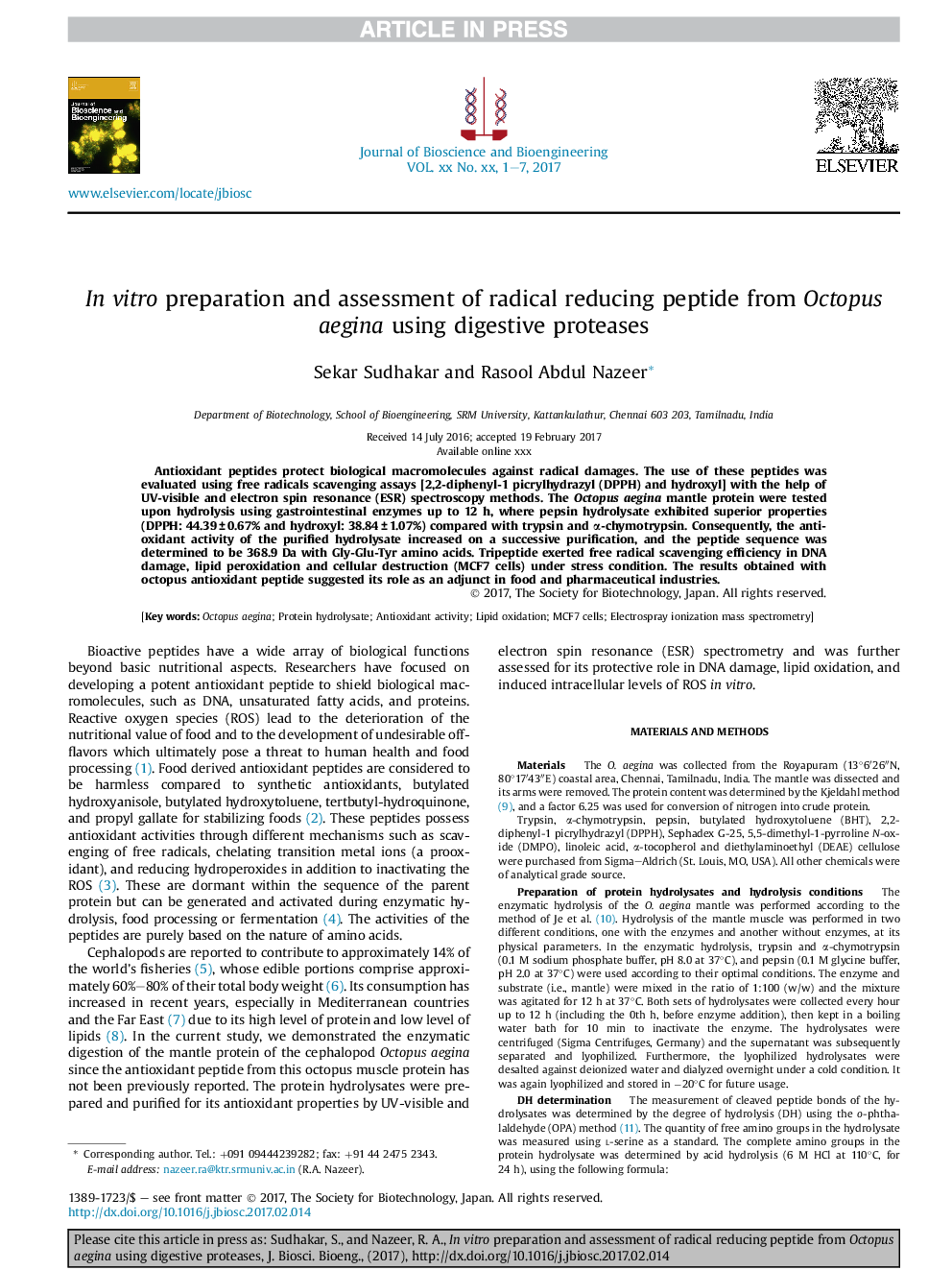| Article ID | Journal | Published Year | Pages | File Type |
|---|---|---|---|---|
| 4753305 | Journal of Bioscience and Bioengineering | 2017 | 7 Pages |
Abstract
Antioxidant peptides protect biological macromolecules against radical damages. The use of these peptides was evaluated using free radicals scavenging assays [2,2-diphenyl-1 picrylhydrazyl (DPPH) and hydroxyl] with the help of UV-visible and electron spin resonance (ESR) spectroscopy methods. The Octopus aegina mantle protein were tested upon hydrolysis using gastrointestinal enzymes up to 12 h, where pepsin hydrolysate exhibited superior properties (DPPH: 44.39 ± 0.67% and hydroxyl: 38.84 ± 1.07%) compared with trypsin and α-chymotrypsin. Consequently, the antioxidant activity of the purified hydrolysate increased on a successive purification, and the peptide sequence was determined to be 368.9 Da with Gly-Glu-Tyr amino acids. Tripeptide exerted free radical scavenging efficiency in DNA damage, lipid peroxidation and cellular destruction (MCF7 cells) under stress condition. The results obtained with octopus antioxidant peptide suggested its role as an adjunct in food and pharmaceutical industries.
Keywords
Related Topics
Physical Sciences and Engineering
Chemical Engineering
Bioengineering
Authors
Sekar Sudhakar, Rasool Abdul Nazeer,
